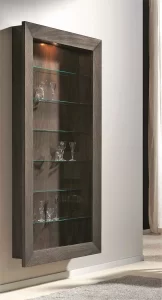In both museums and retail environments, display cases play a central role in how items are experienced. While museums use them to preserve and showcase priceless artifacts, retail stores rely on them to enhance visual appeal and communicate value. Though the purpose differs, the philosophy behind good display design is surprisingly similar—presentation that protects, organizes, and inspires.
The Many Roles of Display Cases in Retail
Retailers have adopted many ideas from museum-style presentation. Just as curators tell stories through exhibits, modern retailers use display cases to tell a brand story. Cases are no longer just functional—they’re focal points of interior design.
Glass countertop cases, wall-mounted units, and freestanding towers allow products to be viewed clearly while keeping them secure. For luxury brands, this transparency creates a “gallery-like” experience, giving shoppers the sense that every product has significance. A thoughtfully placed museum case can transform ordinary merchandise into something special, using lighting and layout to elevate the item’s perceived value.

Types of Cases That Shape Retail Spaces
Different types of display cases serve unique purposes:
- Wall-mounted cases save floor space while offering visibility for small accessories or collectibles.
- Tower cases draw vertical attention, ideal for highlighting featured or premium items.
- Countertop cases keep products at eye level during transactions, encouraging impulse buys.
- Freestanding island cases create interactive spaces in larger stores, allowing customers to browse from multiple angles.
Combining multiple case types creates visual rhythm—important for keeping customers engaged as they move through a store.
Design Principles Borrowed from Museums
Museum cases prioritize lighting, visibility, and preservation—concepts that translate perfectly into retail. Soft, focused lighting prevents glare while emphasizing shape and color. Clean lines and minimal framing keep the focus on the product. In retail, these choices subtly suggest luxury, quality, and trust.
Durability and adaptability are also key. Fixtures that can be easily rearranged or re-lit allow retailers to refresh their store’s visual layout seasonally without starting from scratch.
The Emotional Side of Presentation
Whether a historical artifact or a fine piece of jewelry, the psychology of display remains the same—people value what’s presented thoughtfully. When products are placed in sleek, well-lit cases, they feel more exclusive. This emotional impact leads to longer engagement times and higher perceived worth.
Incorporating museum-style presentation into retail design isn’t about formality—it’s about storytelling. Using museum cases as inspiration, retailers can build displays that do more than just show products; they create lasting experiences that turn browsing into appreciation, and appreciation into sales.